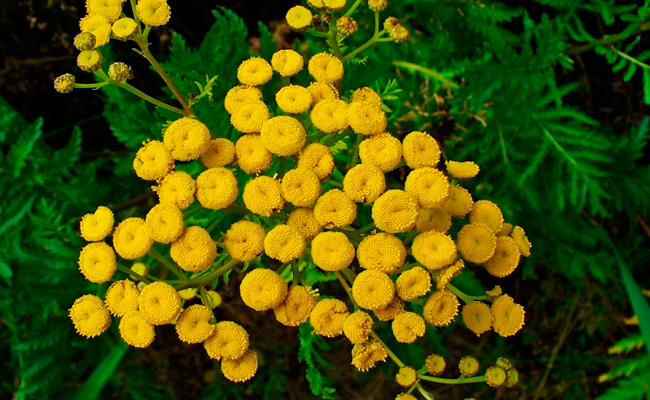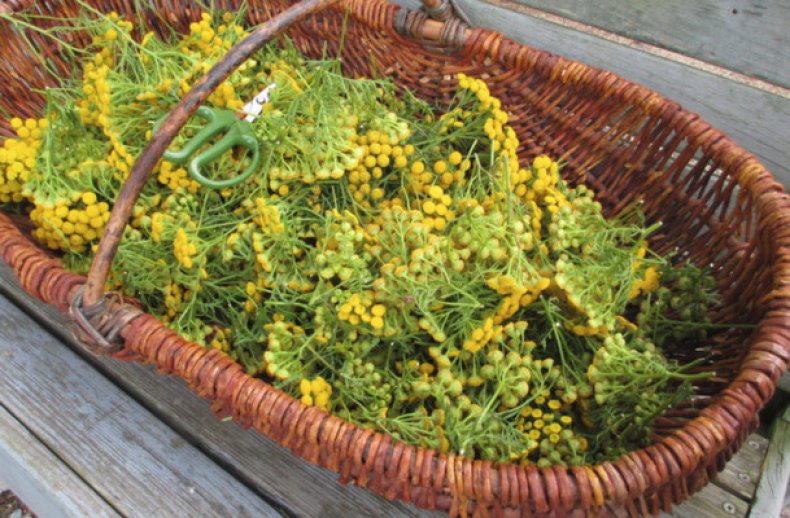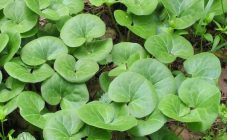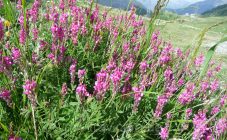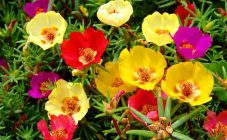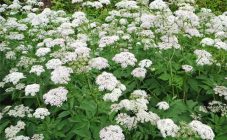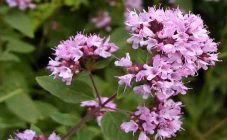Content:
Tansy is not only an attractive plant, but also a culture that can have powerful healing effects. Traditional healers have long used it as a therapy for many ailments.
Description of culture
The tansy grass is a bright representative of the Astrov family; 70 plant species have been recorded in nature. Among them, the common tansy is the most common.
What does tansy grass look like? Catchy tansy is a herbaceous perennial with a creeping rhizome, common in the Northern Hemisphere. Perennials have many names among the people - worm, nine-brother, calyx. The stem of a perennial is erect, developing up to 1.5 m upward. Its large leaves are placed alternately, pubescent, the length is 20 cm. The perennial gives inflorescences with a catchy lemon color. Lemon flower baskets are collected in large shield inflorescences. After the end of flowering, the herbaceous perennial produces fruits of oblong achenes, up to 1.8 mm in diameter. Ripening of medicinal fruits begins in August-September.
Perennial varieties
In its natural habitat, there are more than 70 subspecies of bright tansy. 27 species are distributed throughout the country of Russia. The entire genus of tansy includes 167 subspecies, of which only 30 perennial species grow in Russia.
At the first glance at the flower, it seems that this flower will take its rightful place in any flower bed. Since the plant has powerful healing qualities, and in some cases it can emit harmful substances, it is worth choosing neighbors for it with special care.
The most common types are common and balsamic tansy, which have a characteristic spicy aroma. The perennial is cultivated on an ongoing basis throughout Europe. It was popularly called kalufer.
The most beautiful perennial species is maiden tansy. This species is famous for its decorativeness, unpretentiousness in care, delicate white flowers, similar to chamomile.
The perennial is distinguished by its unpretentious care, it only requires weeding from annoying weeds, the introduction of life-giving fertilizers. During the spring awakening period, high-quality ammonium nitrate and superphosphates are added to feed the perennial, in autumn they also feed the catchy tansy with similar compositions.
Reproduction methods
Many experienced gardeners use the vegetative method of spreading tansy. In May or sultry August, a perennial plant is dug up by the roots. After removing tenacious weeds, the separated bush is divided into parts.
The comfortable temperature for seed germination is + 18 degrees. After temperature hardening, the sprouts are picked in cups.After the threat of frost has passed, young shoots are planted in a permanent place, leaving a gap of 30 cm between them.
The perennial is distinguished by its unassuming soil mixture, it is able to grow in dimly lit areas.
Useful properties of culture
Many people know for certain the medicinal qualities of a perennial. A wide range of life-giving properties makes it possible to use resistant tansy in pharmaceuticals to create healing herbal preparations.
Healers appreciate the tenacious herb due to the following qualities:
- Antimicrobial;
- Anti-inflammatory;
- The ability to heal;
- Astringent quality;
- Diuretic;
- Antiparasitic.
All this spectrum of effects allows the use of tansy in traditional medicine as part of many effective medicines.
The garish herb can heal and beneficially affect the following pathological conditions:
- Restores the biliary process, digestion;
- Helps reduce cramp pain;
- The use of tansy is recommended while getting rid of parasites;
- Has a beneficial effect on the function of the heart muscle;
- The use of tansy as a local remedy is possible with diagnosed gout, rheumatism;
- A decoction based on unpretentious tansy can help with diabetes, tuberculosis.
This perennial has contraindications: it is forbidden to consume it for young children and schoolchildren, as well as for persons suffering from an identified gallstone disease. Bearing a fetus and lactation is not the time to take such decoctions. It is not recommended to use decoctions based on it for a long time, since instead of the desired relief of the condition, the opposite result may appear. Before direct reception, they carefully study the instructions so that there are no misunderstandings.
Plant diseases and pests
This plant differs in that it is practically not attacked by various pests, since it literally scares them away with its unpleasant aroma. Diseases also rarely stick to bright lemon tansy.
The process of collecting and harvesting grass
For the treatment of various ailments, inflorescences are collected. At the same time, bright lemon flowers are collected at the very beginning of flowering, then the amount of life-giving components is maximum. Healthy specimens that are not beaten by the disease are suitable as raw materials. The location of the shrub is important, you should not collect the inflorescences from the shoot, standing near the road, a smoking plant, a garbage dump. The useful chemical composition of the perennial depends on the place of growth.
The bright yellow flowers are cut without stalks. At the same time, they make sure that the plants are dry, that is, the collection is done in the morning or in the evening in the absence of precipitation. Dry the fees in the shade in the open air. You can quickly dry the harvested flowers in a modern fruit dryer. The set temperature should not exceed 40 degrees. In the finished form, the collected flowers are stored in breathable fabric bags. Boxes or jars with ventilation are also suitable for storing them. The harvested plant retains its medicinal qualities for 2 years after harvesting, subject to storage conditions. Correctly collected and dried perennial inflorescences help the whole body.


